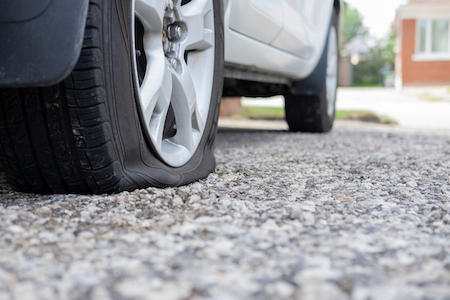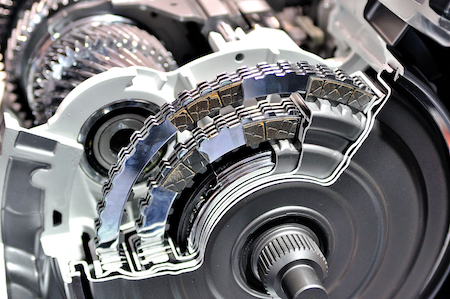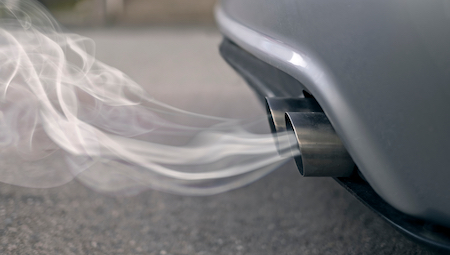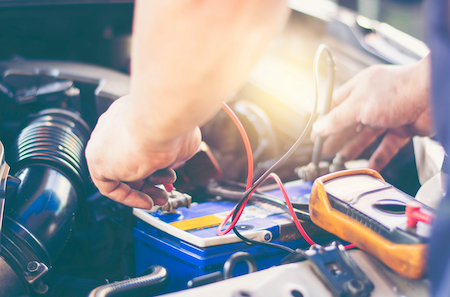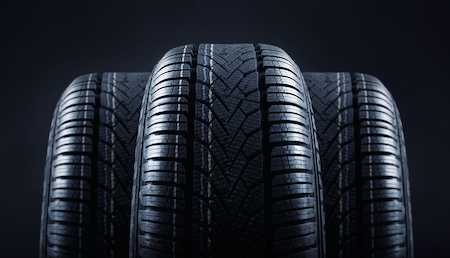Today’s modern fuel pump is designed for effectiveness and efficiency.
An electrical fuel pump is used by all modern day vehicles that still rely on gasoline for power and energy. It works by utilizing a motor in the fuel pump assembly to draw in fuel you’ve previously pumped into the fuel tank. From there, fuel travels up into the fuel line, and into a fuel rail where it’s injected into the cylinder. It mixes with air and a spark to create combustion.
The pump contains a filter at one end to keep any impurities from moving past the fuel tank and into the fuel line. There’s also a fuel float that sits on top of the fuel supply and sends out a signal to the sensory board. It reads the resistance and relays the message to the fuel gauge, telling you how much fuel is left in the tank.
It’s a simple process, and when it works correctly, your entire system is an effective machine.
Yet because it’s part of a bigger picture, one piece among many in a vehicle with over 10,000 parts, one small failure can impact the entire system. And it’s often difficult to tell which component is failing.
Types of fuel pumps
Older vehicles relied on a mechanical fuel pump to achieve results. The mechanical pump would draw fuel in, trap it, then move the fuel toward the carburetor and engine. It was a cyclical movement, repeating the process repeatedly.
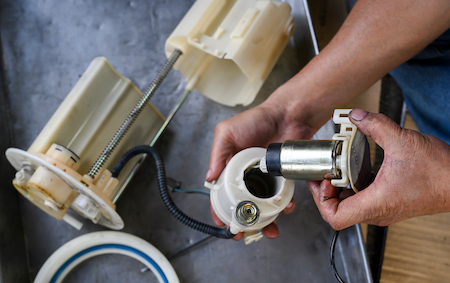
Electric fuel pumps use an injection process with high powered pressure. It’s accomplished by using an electrical process rather than mechanical. They come in several formats:
- In-tank – the majority of fuel pumps reside inside the fuel tank. This helps protect the module, keeping it cool as it operates.
- Inline – these are easier to replace as they are mounted outside of the fuel tank, somewhere between the gas tank and the engine.
While there are others, these two make up the majority in cars today.
How long a fuel pump lasts
While fuel pumps aren’t a part of a regularly scheduled maintenance routine, like any part on your vehicle, they won’t last forever.
Most manufacturers today will state that a fuel pump should last well past 100,000 miles. They aren’t part of a preventative maintenance package that should be replaced “just because.”
Yet they can and will fail the longer you drive your vehicle. Luckily, they start to give warning signs before they shut down completely.
That’s where paying attention to your vehicle can pay off. If you notice any of these warning signs, bring your car in for a full inspection. That gives you a chance to make the repair before it leaves you stranded, or causes even more damage down the road.
Engine faltering at high speed
As you pull onto the highway and drive consistently at higher speeds, you may notice your vehicle falters a bit before returning to its regular performance. This is a classic sign there may be something wrong with the fuel pump. This sputtering occurs as the pump struggles to keep a consistent stream of fuel moving into the engine for proper pressure. This causes a hit or miss chain as the fuel circulates, causing the engine to falter as it reacts.
Vehicle dies with a heavy load
Are you pulling a trailer, or simply have your car loaded down with materials? The extra weight could add pressure to an already faltering fuel pump, cutting off the fuel supply and making it sputter. When the fuel pump can’t supply the correct fuel supply to keep your vehicle operating, especially under more strenuous circumstances, it’s a sign something might be wrong with the fuel pump.
Low fuel pressure
Low fuel pressure can show up in many ways. Is your car misfiring frequently when you start it up for the day? Does it feel like the acceleration is compromised? Do you experience a rough idle when you leave your car sitting and running? Does the engine stall at different points of your drive? You should also pay attention to any dashboard lights that may illuminate any time your car is in operation. The Check Engine light can signify many different problems with the vehicle. The best way to find what it is will be to bring it in for a full diagnostics test, to get to the root of the problem.
Slow acceleration
If the fuel pump isn’t doing its job, it can’t effectively regulate the fuel supply. That means the system might be pulling too much gasoline at certain points, while not enough gasoline at other times. That can cause acceleration to be compromised. If you aren’t getting the necessary supply of fuel, your car won’t perform.
Loss of gas mileage
Tracking your gas mileage is an easy way to determine problems with the handling of your vehicle. By tracking numbers with every fill up, you develop a pattern for how your car operates. You’ll know if mileage suddenly decreases, you have a potential problem. Fuel pumps have a release valve that allows more fuel to flow into the engine if it fails to open. You’ll notice this by having to fill up more frequently. And at today’s gas prices, that can be a massive uptick in your budget.
Engine fail
If you face any of the above conditions regularly and continue to ignore them, eventually, your engine is going to refuse to start. If fuel doesn’t flow into the engine during the starting process, or flows unevenly throughout your entire driving experience, it’s going to impact all of the pieces in the system. That much stress on the fuel supply will cause the car to no longer start.
All signs point to a bad fuel pump?
Don’t ignore it. It won’t go away.
Instead, schedule a visit with one of our mechanics. We’ll inspect it, diagnose the problem, fix it, and have you back on the road in no time.
Give us a call today. Your fuel pump and your vehicle will thank you.


